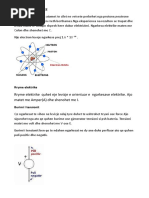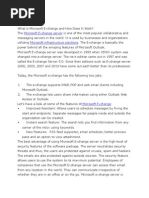Knoppix Boot Only Isometric Exercises
Isometric exercises have been found to help take off inches around your waist, increase overall strength, and even decrease high blood pressure. Dmv drivers practice test nj driving. Besides that, you don't need any equipment, and they're actually fun. So if you're looking to take a break from yet another.
A bootable disk with Knoppix can be a lifesaver when your computer goes awry. In this feature, we guide you through the process of fixing Linux with Knoppix, which includes repairing boot issues, working with key system files, and working with Linux partitions. Also, check out our other feature on Fixing Windows with Knoppix. These are from the ExtremeTech book Hacking Knoppix.
Knoppix is a variant of Linux, so it’s no surprise that Knoppix can be used to fix problems that crop up in other Linux distros. Machines running Linux are going to face problems: humans make Linux, after all, and humans also use Linux, so errors, mistakes, and bugs are bound to crop up.
Fortunately, there’s Knoppix.
This article explores some of the fixes that have worked for the author and will likely work for you, too.
Ensuring That a Machine Will Run Linux
Will a particular machine even work with Linux? Here are a few ways to find out:
Isometric Exercises Pdf
- Ask the manufacturer. Good luck. Most computer makers still treat Linux like the crazy aunt in the basement, not to be seen and definitely not to be spoken of. This is changing, and some vendors now support Linux, but only on a selected few machines. What if you want to run Linux on a non-supported machine? Don’t ask the manufacturer for advice on that because you won’t get any.
- Ask someone who already has the machine. If a friend owns the same computer, and that friend runs Linux, great! That’s not very likely most of the time, however. You can also search the Net, and oftentimes you’ll find good info, especially if you’re curious about a laptop. Still, it can be a definite exercise in frustration looking for solid info about a particular machine, with hours wasted and no solid data available.
Tip: The best Web site, bar none, for Linuxheads interested in laptops is Linux on Laptops at Linux on Laptops. If you own or are thinking of purchasing a laptop and you want to find out how well it runs various flavors of Linux, you need to visit Linux on Laptops.
- Test the machine. If you can get to the machine, test it to see if it runs Linux. Take a Knoppix disk into your local computer shack and ask if you can try the disk in the machine in which you’re interested. If the machine boots and works, it more than likely supports just about any version of Linux; if you find problems with Knoppix, you’re probably going to have problems with any other Linux, so that computer should be avoided.
- Take your chances. This is always an option. Order the box, and try to install Linux on it. If you have problems, test the machine with Knoppix and note what works and what doesn’t. Then begin punching things into Google until you get answers. One of those answers, of course, can be that Linux simply will not work with that computer, and you need to send it back. This drastic step is growing more and more rare, fortunately, but it’s still true for a few misbegotten manufacturers who don’t yet realize that their lack of support of Linux is going to cost them dearly in the long run.
Knoppix is an excellent tool for verifying the Linux-readiness of a particular computer. Continued…
- 1 of 10
Isometric training is essentially a fancy way to categorize exercises that recruit muscles and exert tension without actually lengthening or shortening the muscle. In other words, your muscle is flexed, but it’s not expanding and compressing. It’s a stagnant way of placing a demand on a desired muscle or group of muscles.
This type of training includes a number of moves that can target your entire body. As always, you can make the best use of your time if you perform moves that engage both your upper body and lower body at the same time. Any of the exercises listed below can be combined with an upper or lower body component to make sure all major muscle groups are being worked.
Isometric exercises are ideal for those with limited workout space, existing knee discomfort, or anyone simply needing a change in their typical fitness routine. Because these moves are improving strength in one body position, they should only serve as a compliment to a more dynamic exercise regimen.
According to the Mayo Clinic, isometric exercises are often prescribed as a path to healing for arthritis and rotator cuff injuries.
Wall Sit
Wall sits focus on improving the strength in your thighs.
Equipment needed: none

Muscles worked: quadriceps, hamstrings, and glutes
- Stand about 2 feet away from a sturdy wall, leaning your back against it.
- Sink your bottom down so that your legs form a 90-degree angle. Your body position should resemble the same posture you have when sitting in a chair.
- Hold this position for 15 seconds.
- Perform 5 rounds of a 15-second hold.
To maintain this position, you will feel your thighs becoming tighter and more fatigued. Experiment going back and forth between driving your weight down through your toes, then your heels. Driving down through your heels will target your glutes, while driving down your toes will target your quadriceps. Just be sure not to let your knees go our past your toes, and when you put weight on your toes, don’t put too much pressure on the knees.
Plank Hold
The plank hold is an effective way to engage the entire anterior portion of your body.
Equipment needed: none, yoga mat optional
Muscles worked: abdominals, quadriceps, and the anterior portion of the deltoid
- Start with your body in a horizontal position with your weight on your toes and forearms.
- Be mindful to flex your hips forward (butt clenched) and don’t let your hips sink.
- Hold this position for 30 seconds. You should feel the most tension in your shoulders and core.
- Perform 4 rounds of 30-second holds.
Overhead Hold
Overhead holds challenge the muscular endurance of your shoulder girdle.
Equipment needed: Light to medium weight required. Start with a 15-pound plate, dumbbell, or kettlebell.
Muscles worked: Anterior, posterior, and superior portions of the shoulder.
- Extend your arms above your head and hold the weight steady.
- Make sure to keep your arms fully extended. Bending your arms will engage different muscles (your biceps and triceps).
- Hold the weight over your head for 30-second intervals.
- Perform 5 rounds.
Increase the challenge by standing on one leg while holding the weight.

Glute Bridge
This move will quickly become a favorite for anyone looking to improve the physique of their backside.
Equipment needed: none
Muscles worked: hamstrings and glutes
- Lie on your back with your knees bent and your arms by your sides.
- Elevate your hips by pressing your weight down your palms and feet.
- Focus on clenching your glutes and driving your weight down through your heels.
- You will feel your glutes and hamstrings starting to fatigue. Resist the urge to let your hips sink.
- Complete 5 rounds of a 30-second hold.
Body Hold
Body holds help you work on your core stability while also developing core strength.
Equipment needed: none, yoga mat optional
Muscles worked: Body holds will mainly fatigue your upper and lower abdominal muscles.
- Sit on your bottom with your knees bent and feet flat on the floor.
- Simultaneously, raise your arms and straighten your legs, creating a “V” shape with your body.
- Hold this position for 15 seconds.
- Perform 5 rounds.
The Takeaway
With so many different ways to exercise, it can be hard to choose which path is right for you. Isometric exercises just may be the perfect addition to your workout routine if you:
- experience chronic knee pain
- are recovering from a knee surgery
- are seeking a low-impact exercise as recommended by your doctor
- are looking for a different kind of fitness challenge
- have a shoulder injury
Knoppix Boot Only Isometric Exercises Free
Always remember that these exercises can be adjusted to suit your current level of fitness. For example, if 15-second body holds are too challenging, bump it down to 10 seconds and then build up as you get stronger over time.
The idea is to push your limits without causing true injury. Soreness can be expected, but listen to your body if you experience excruciating pain.